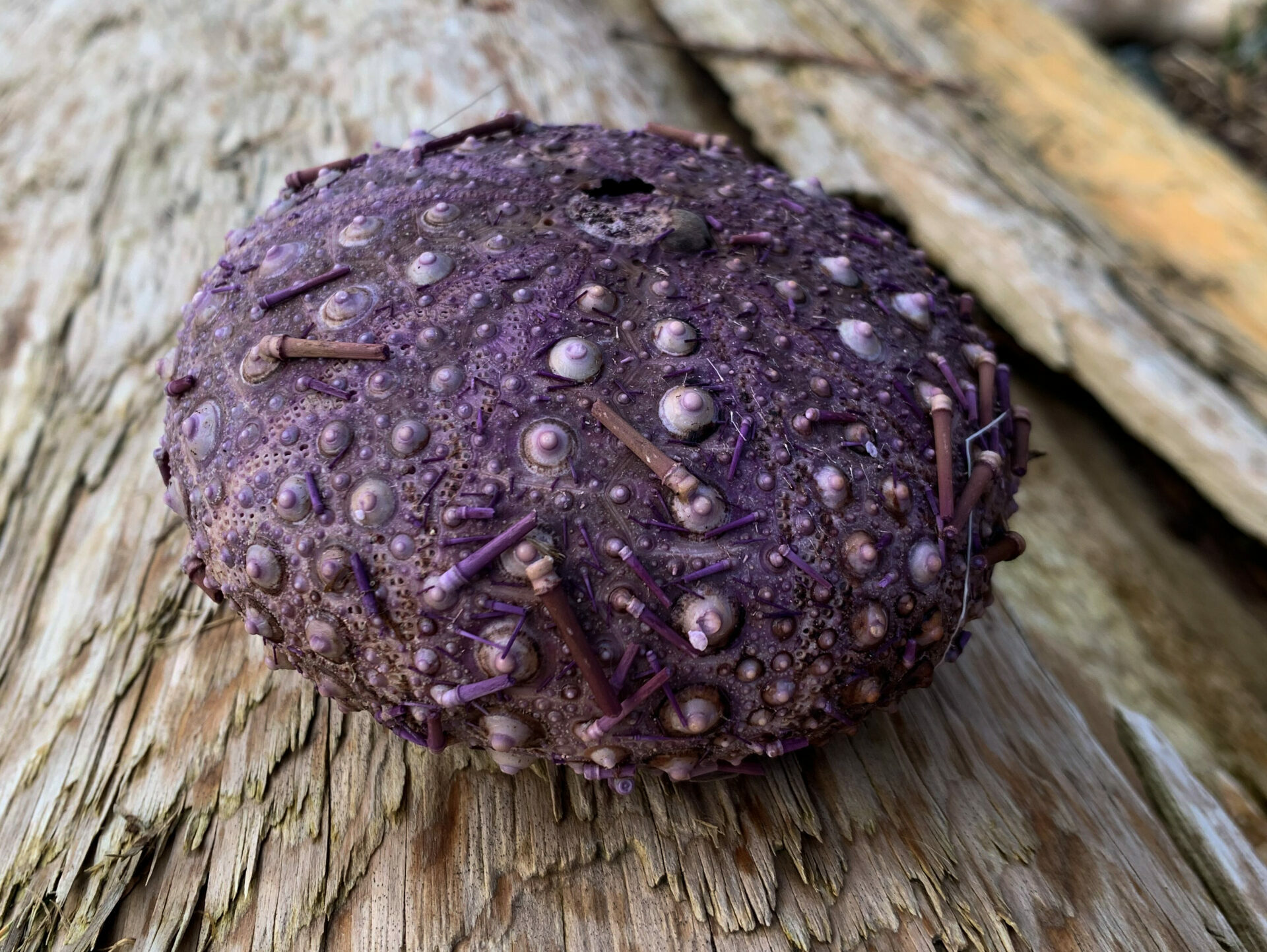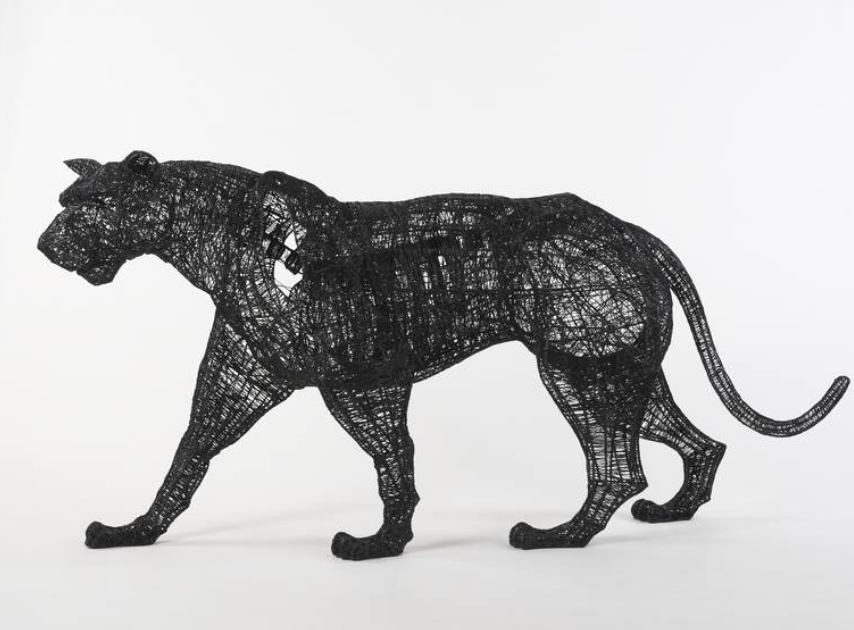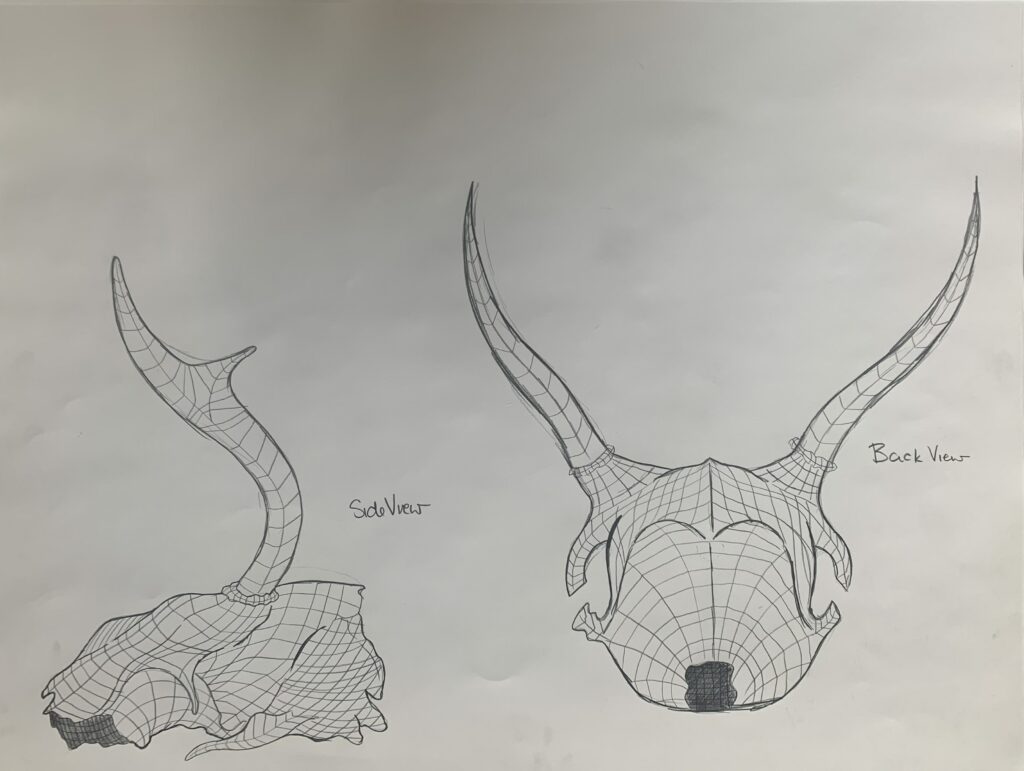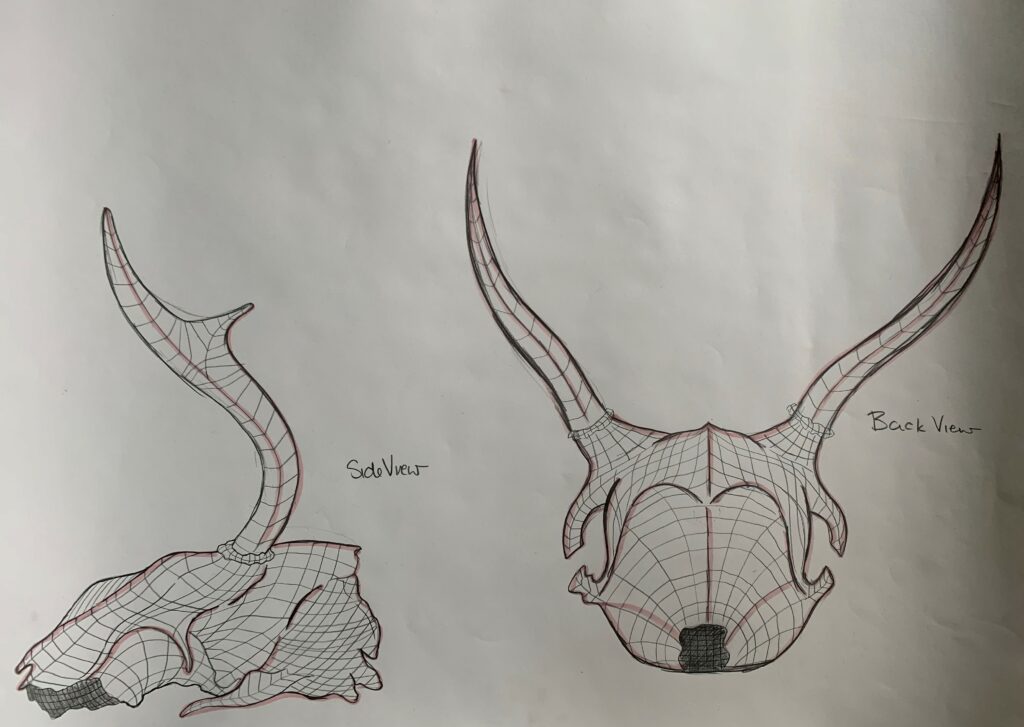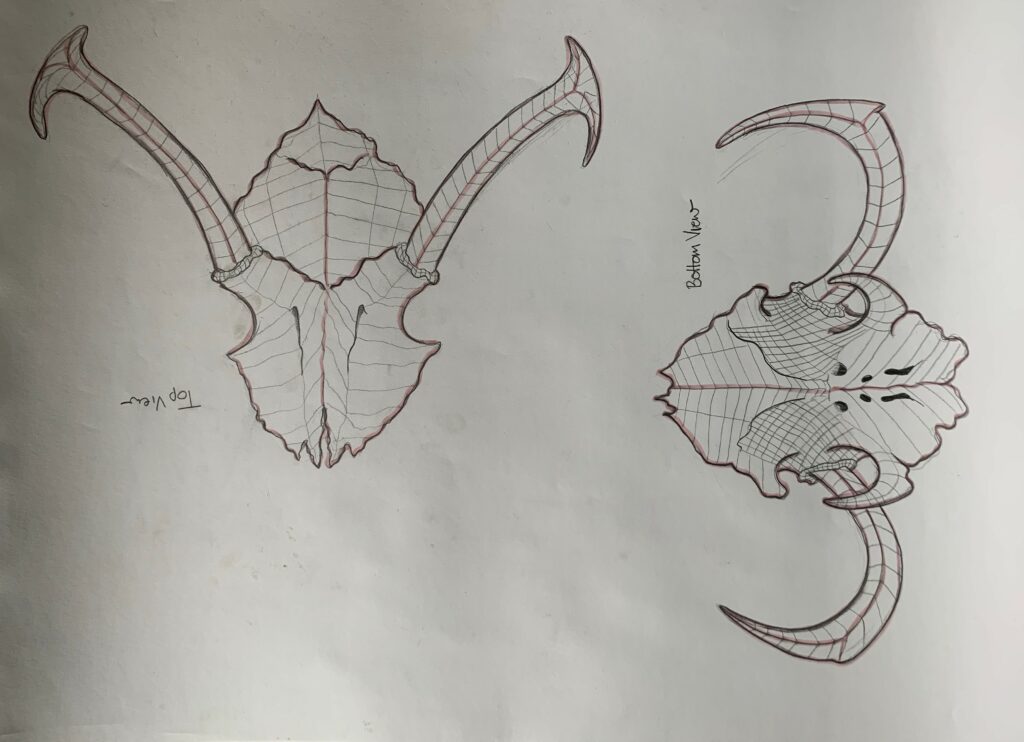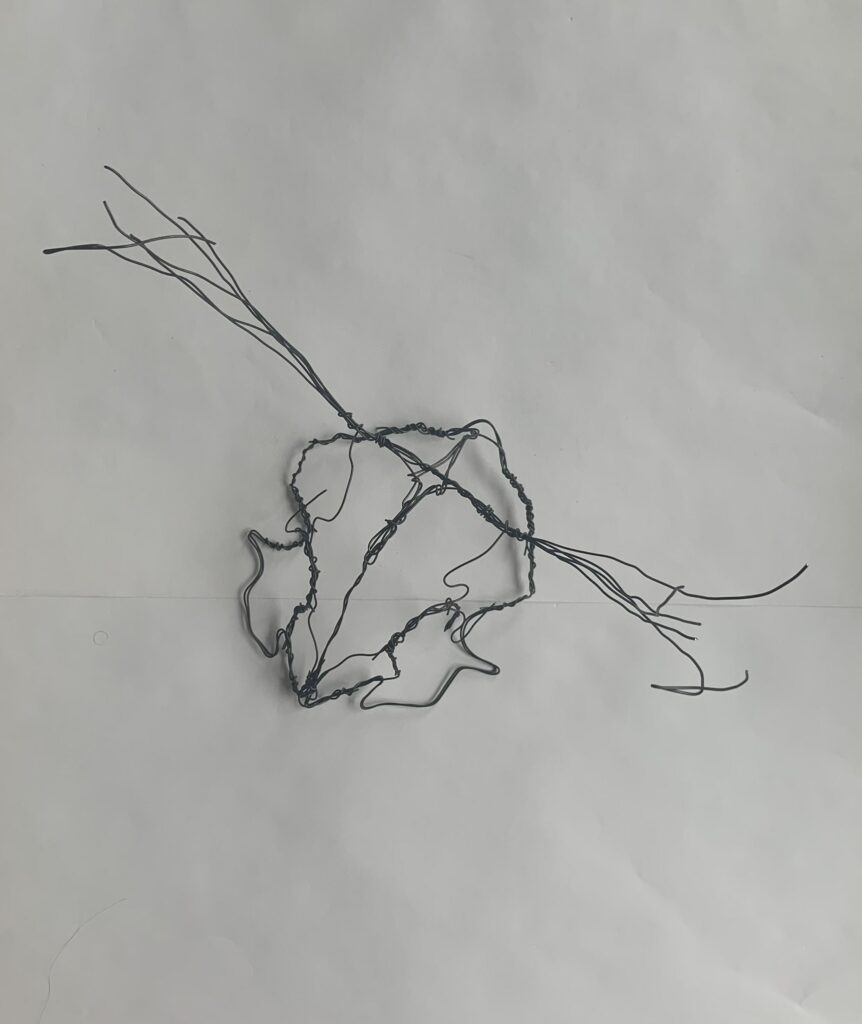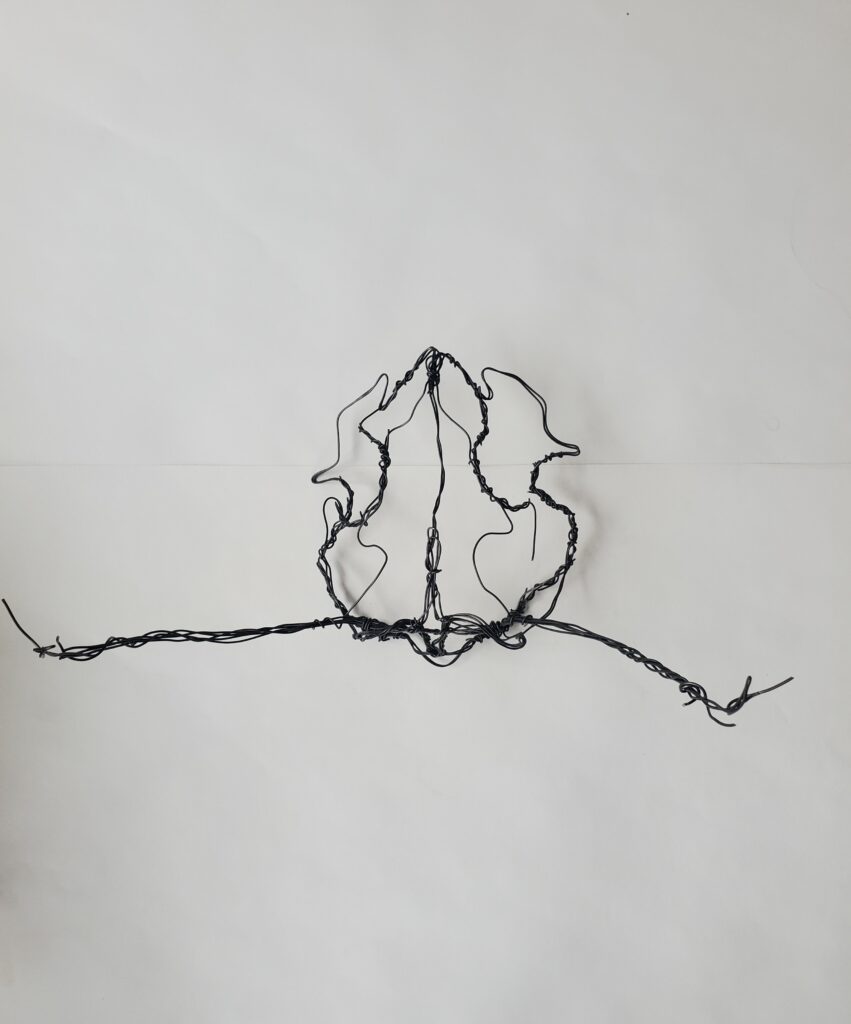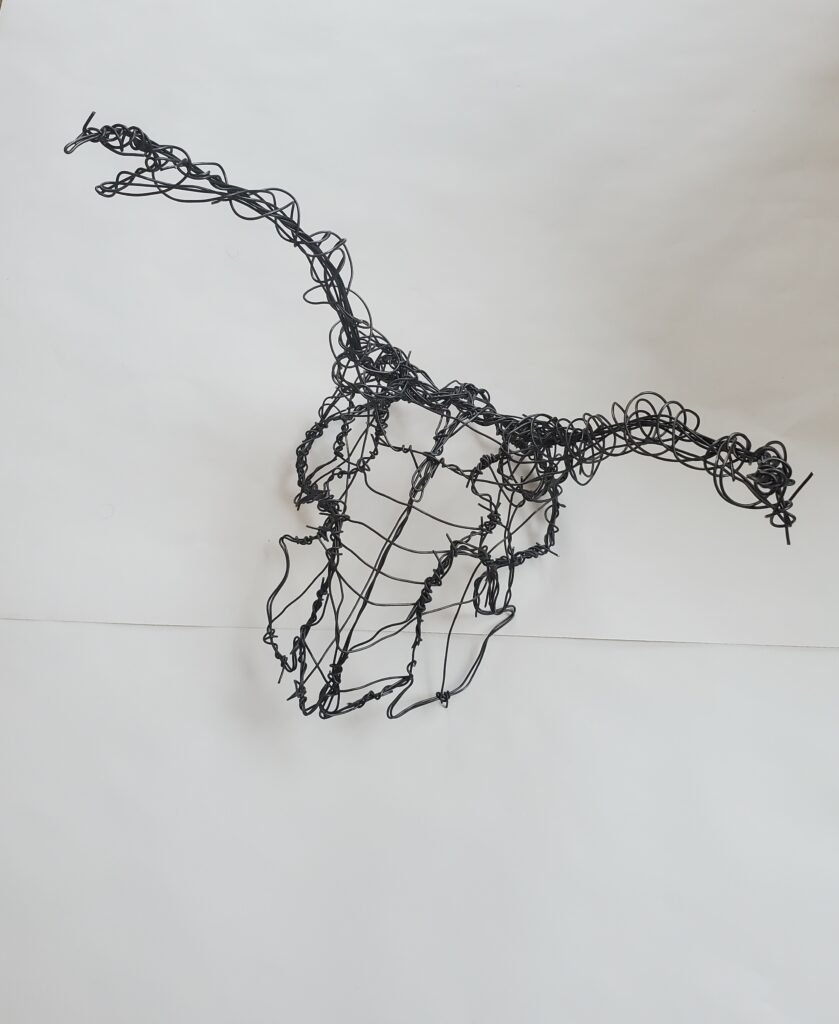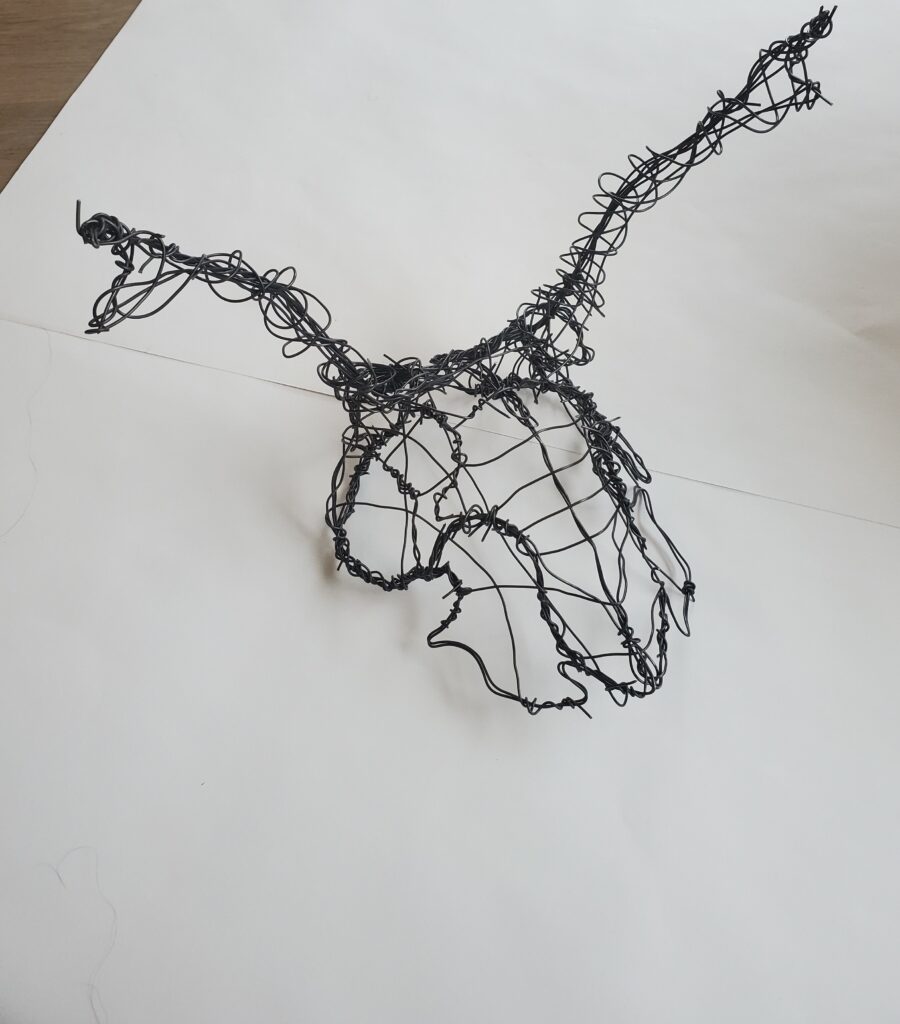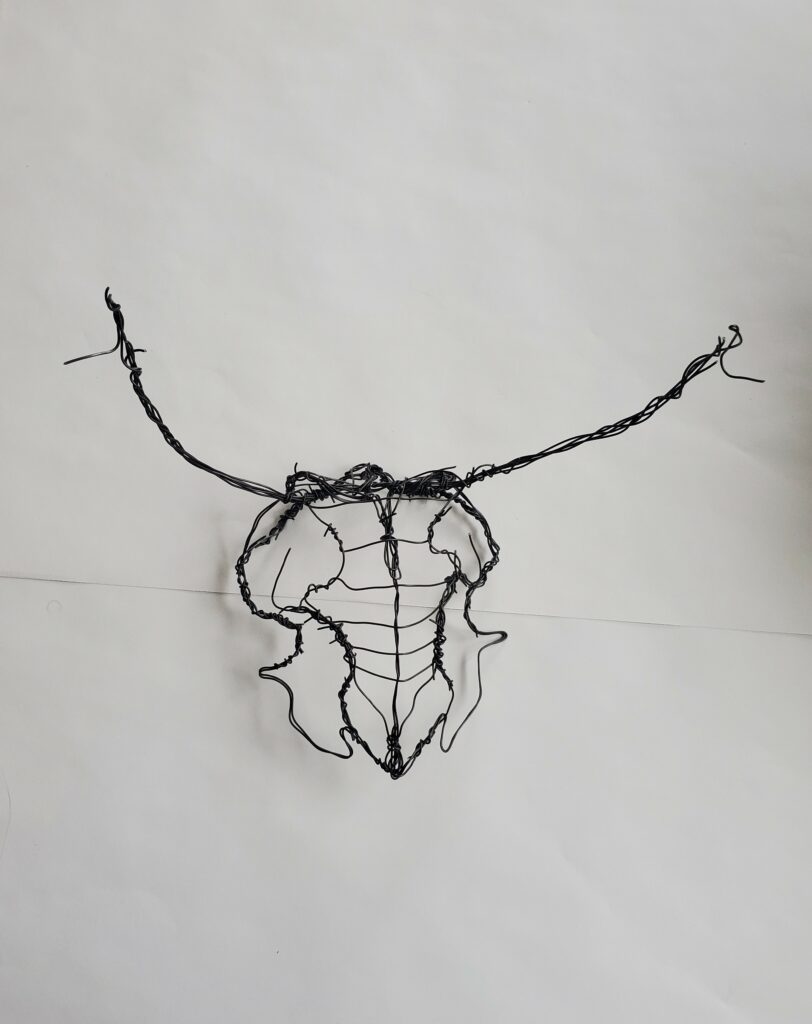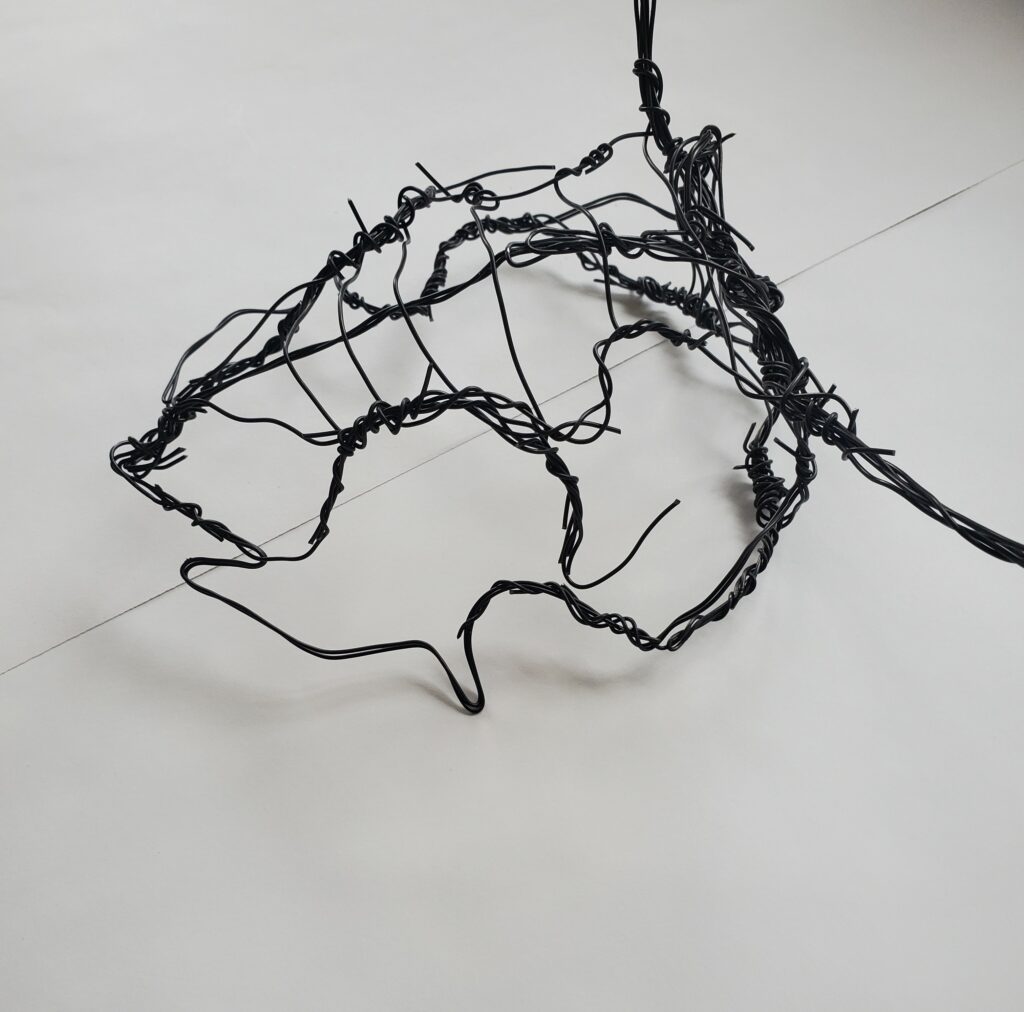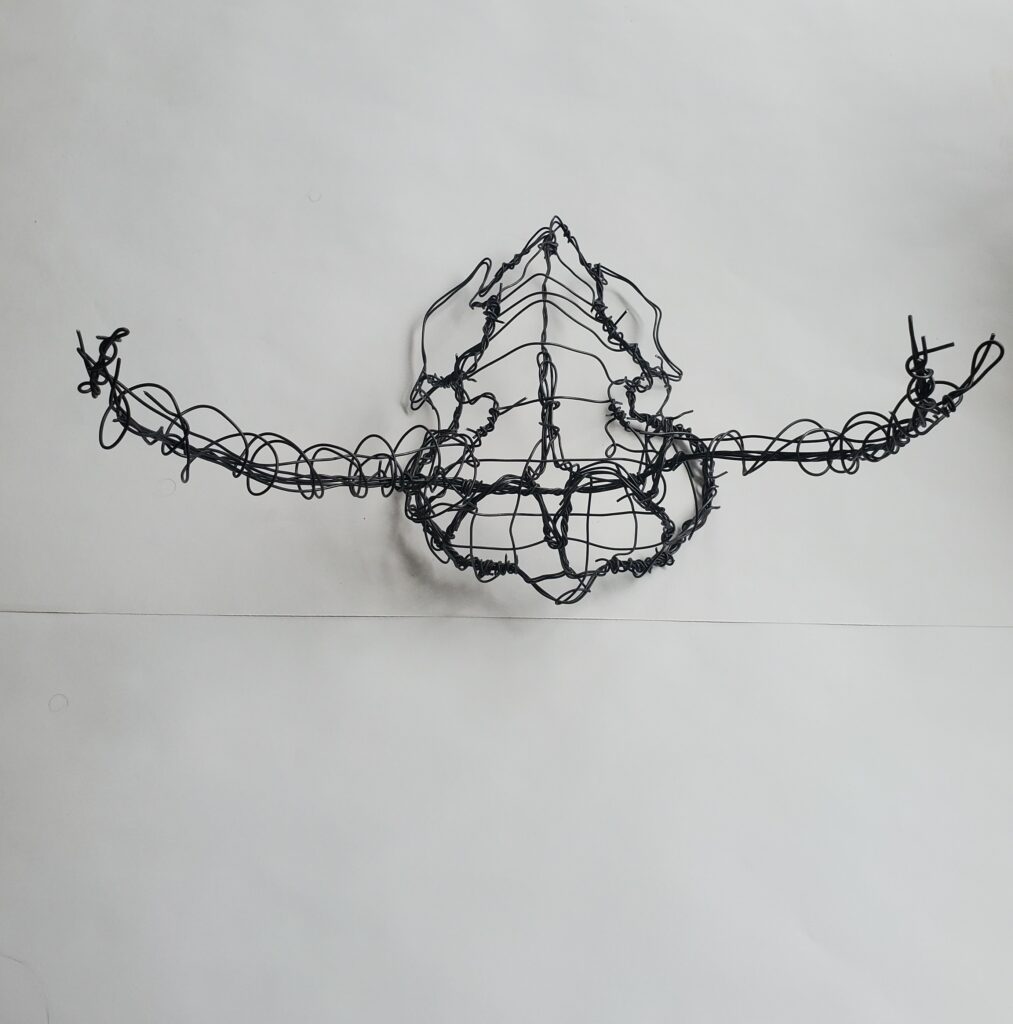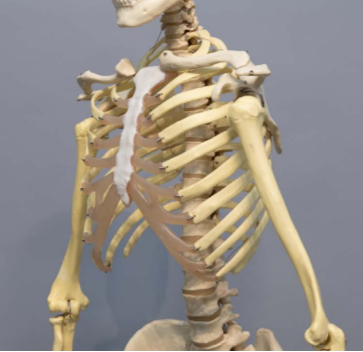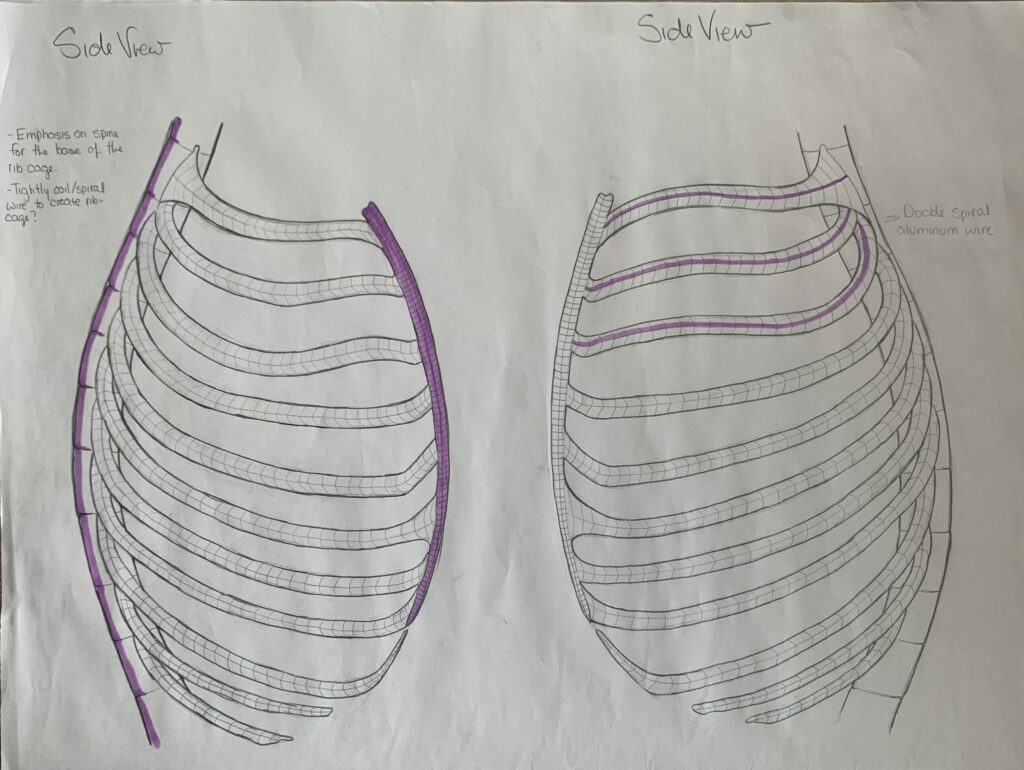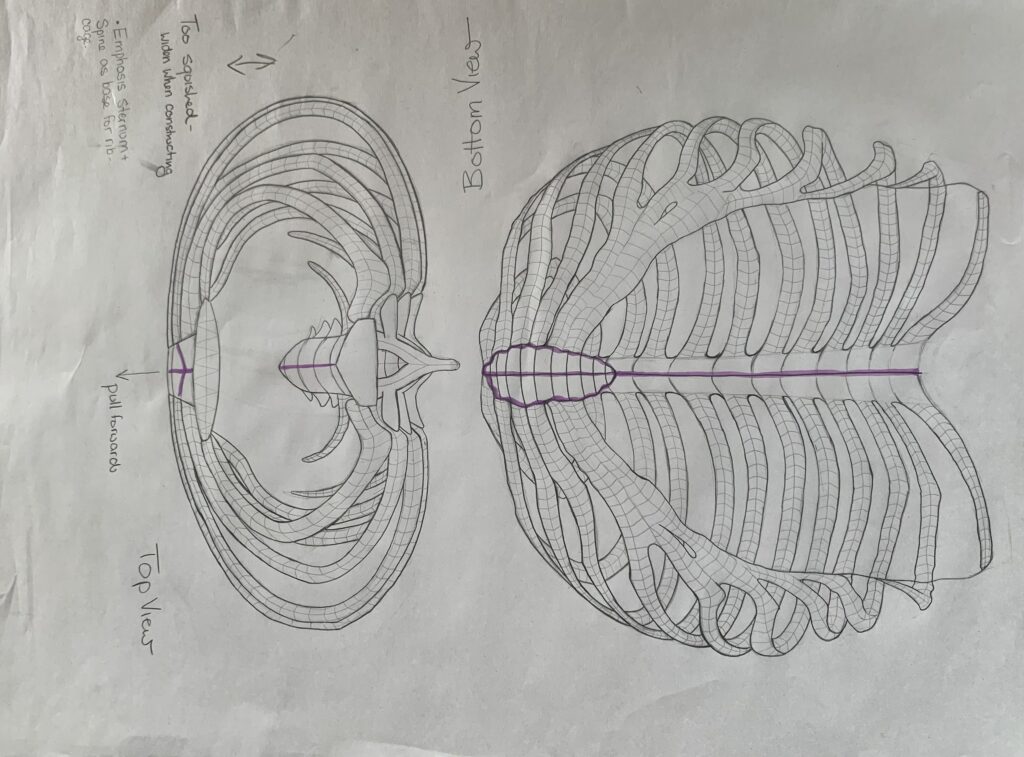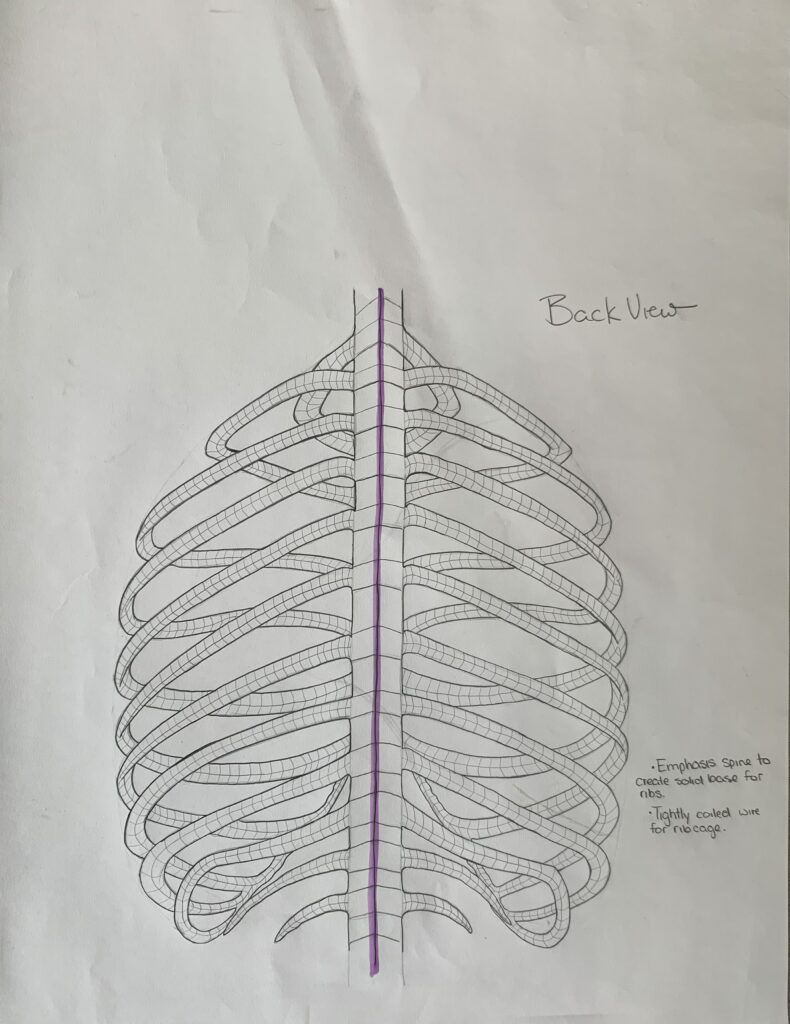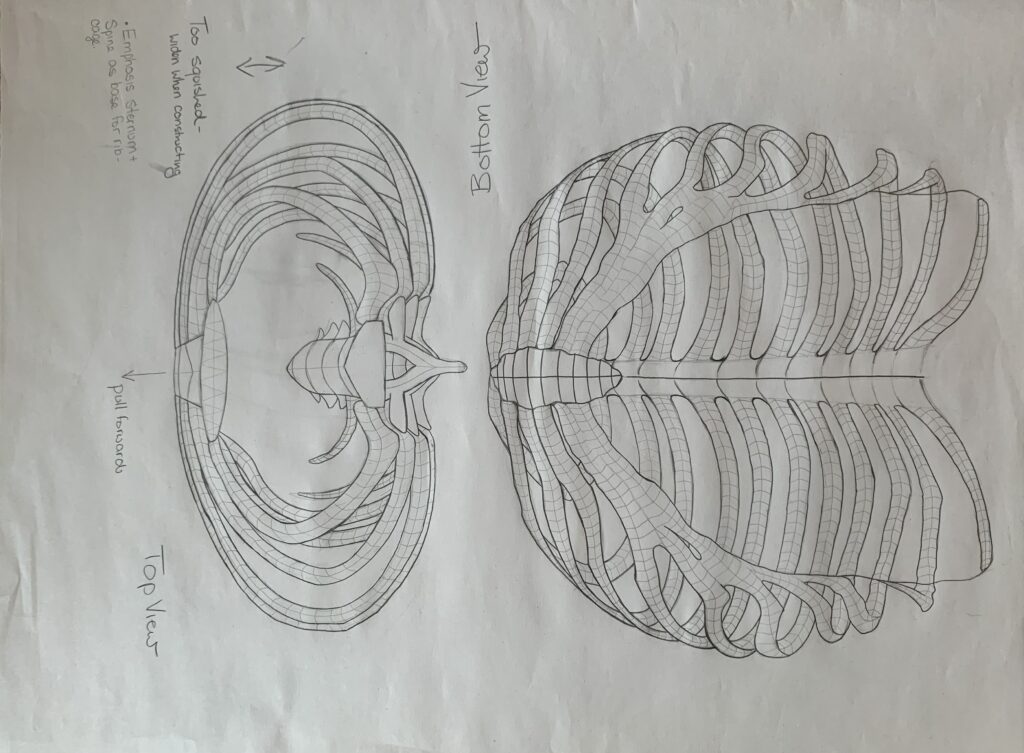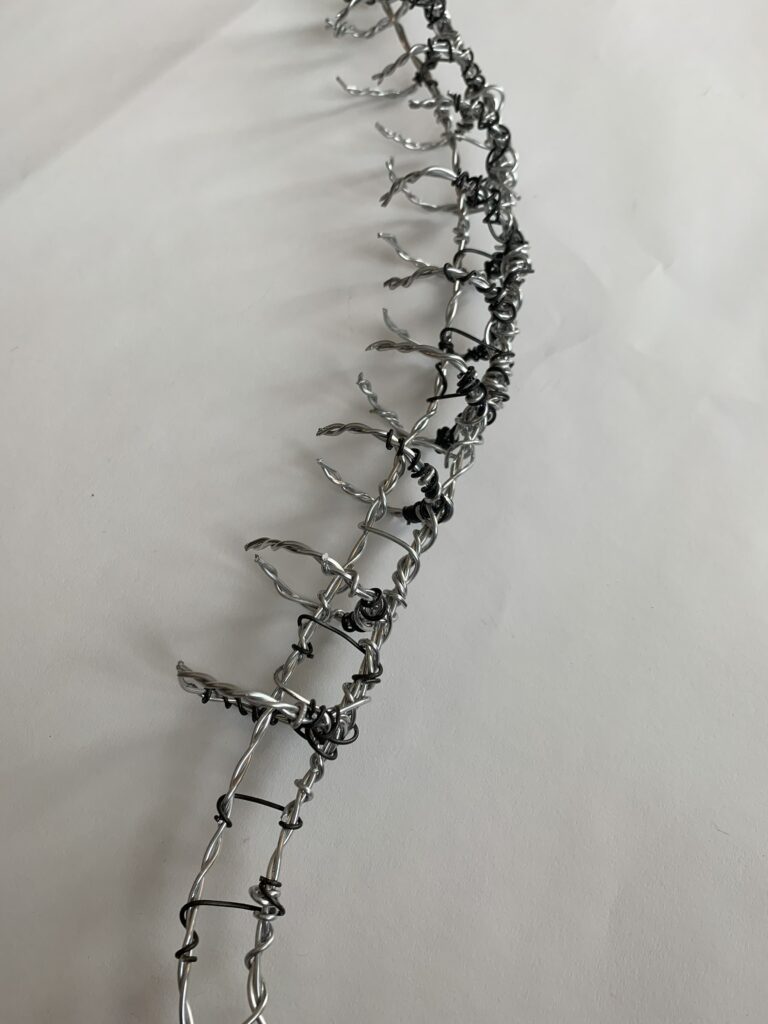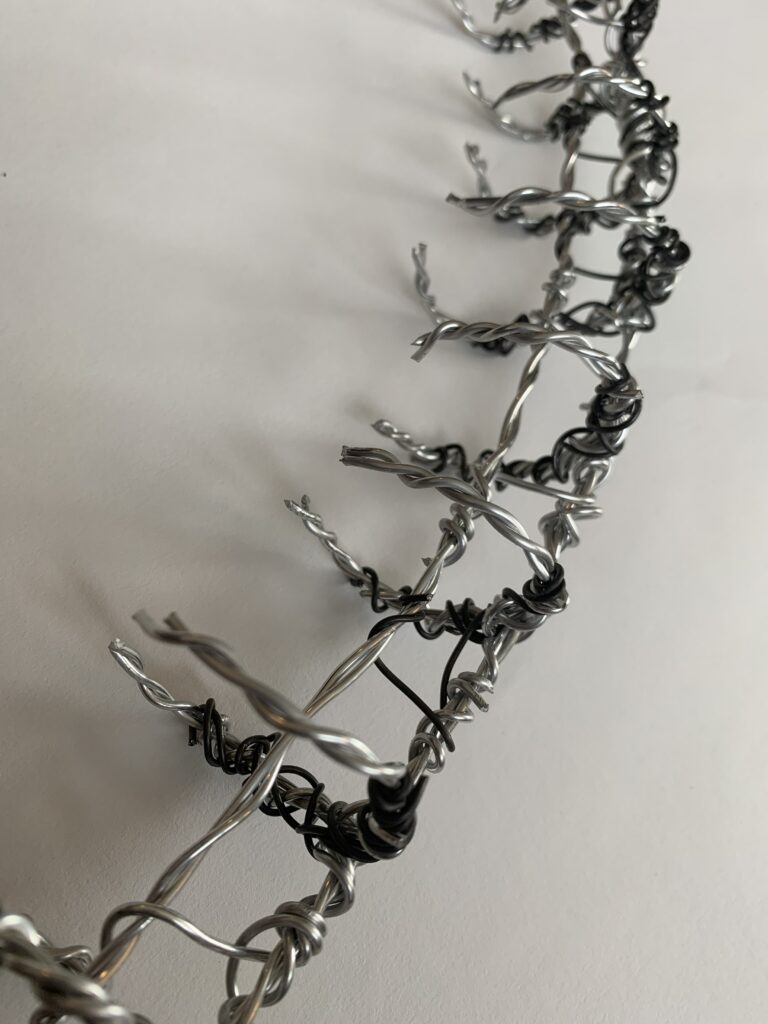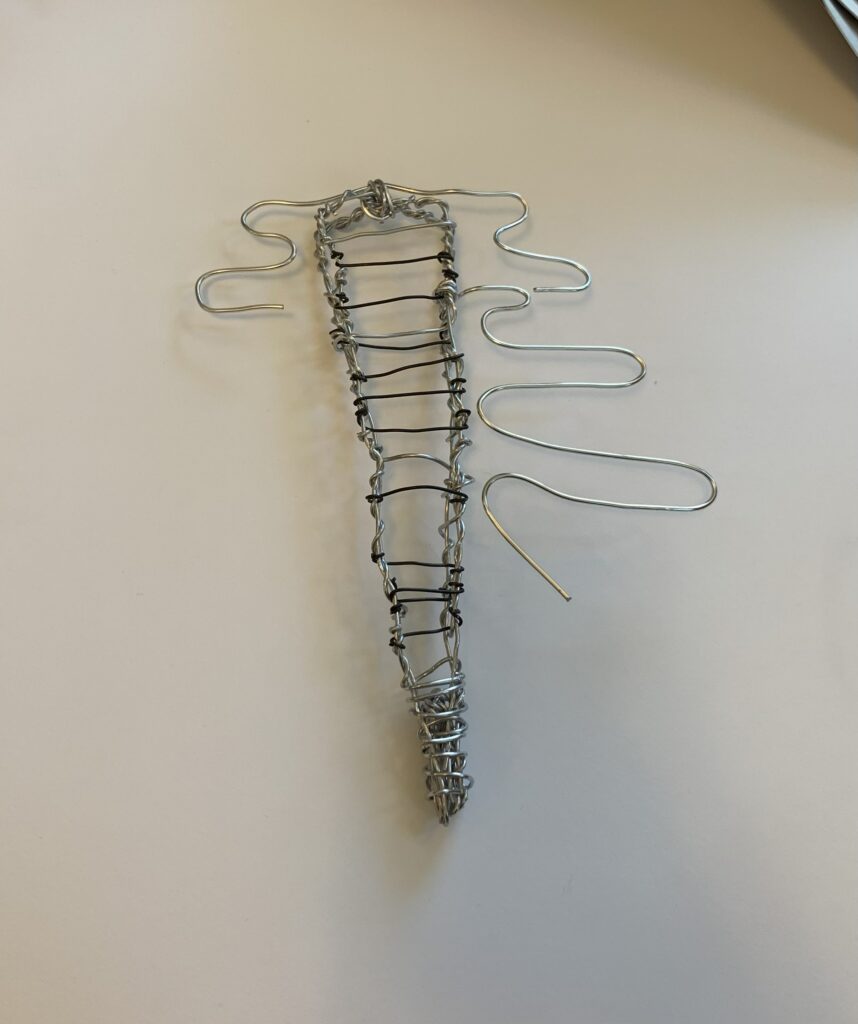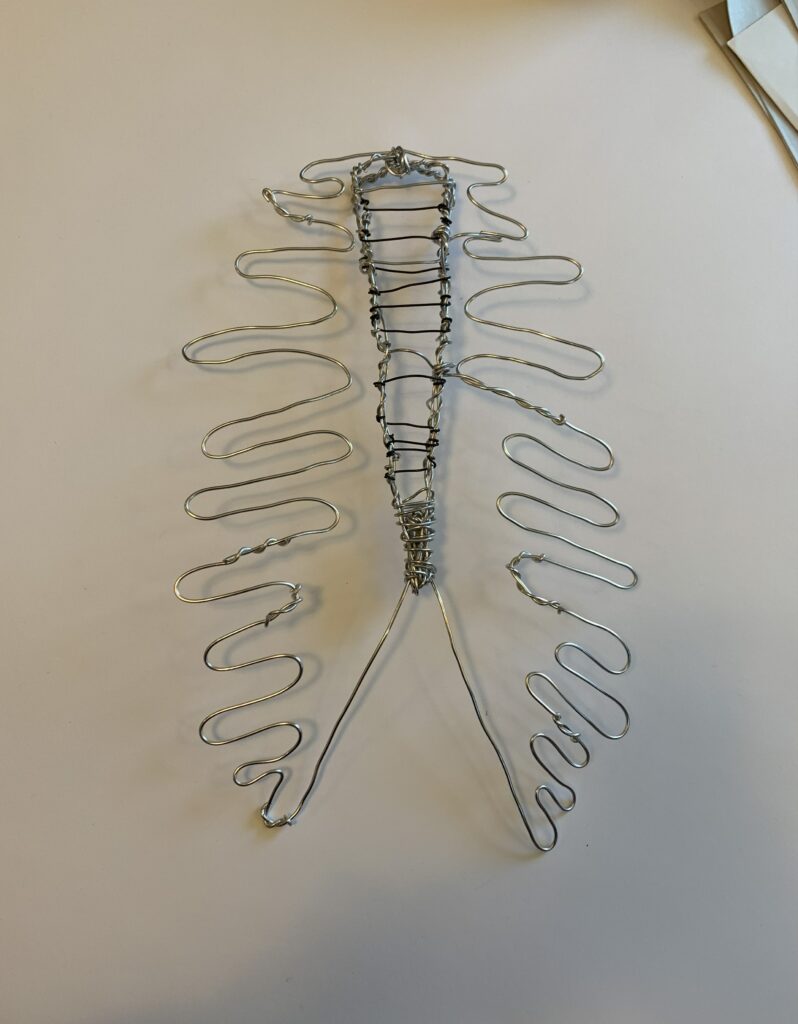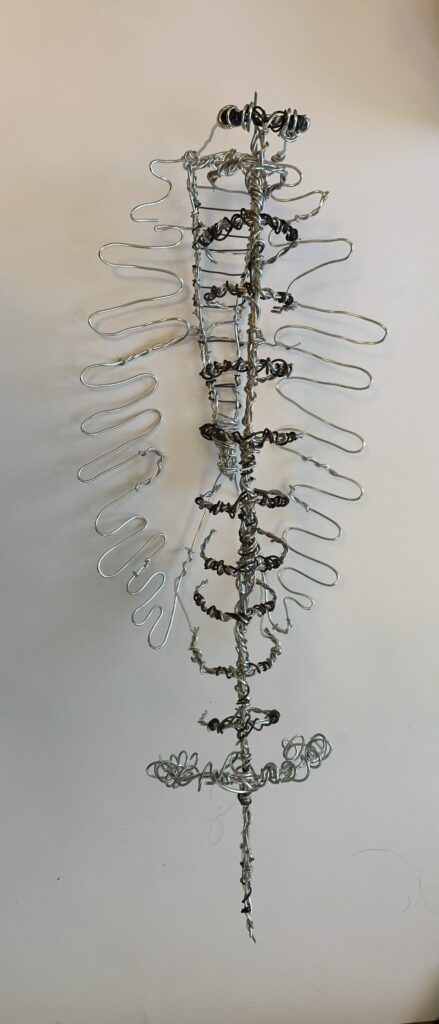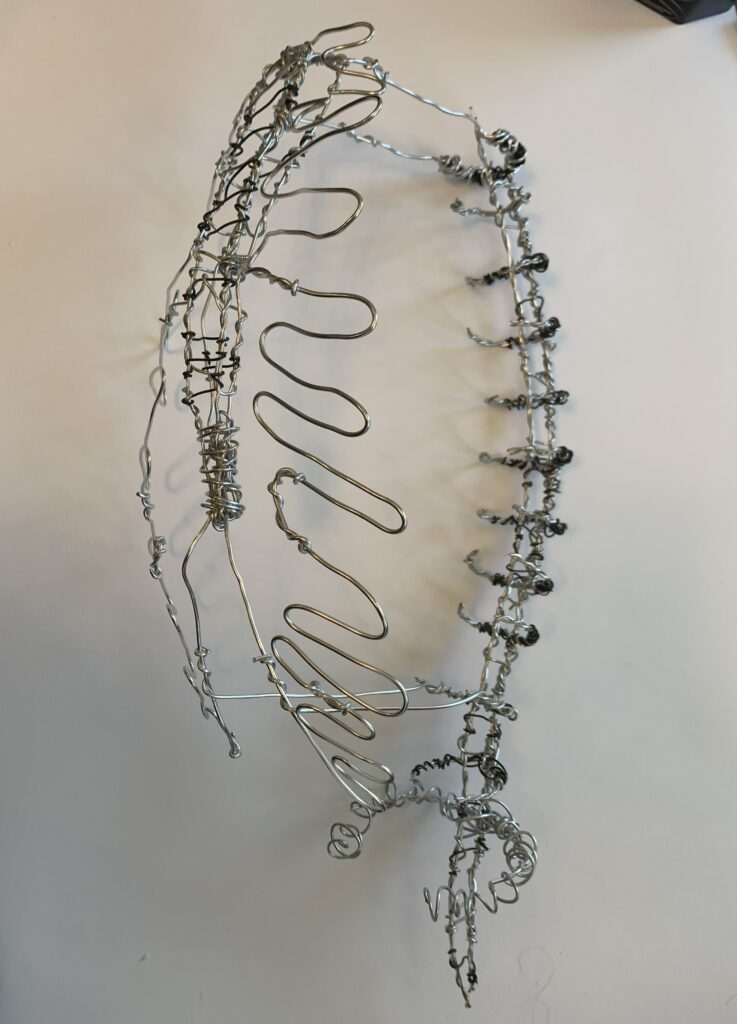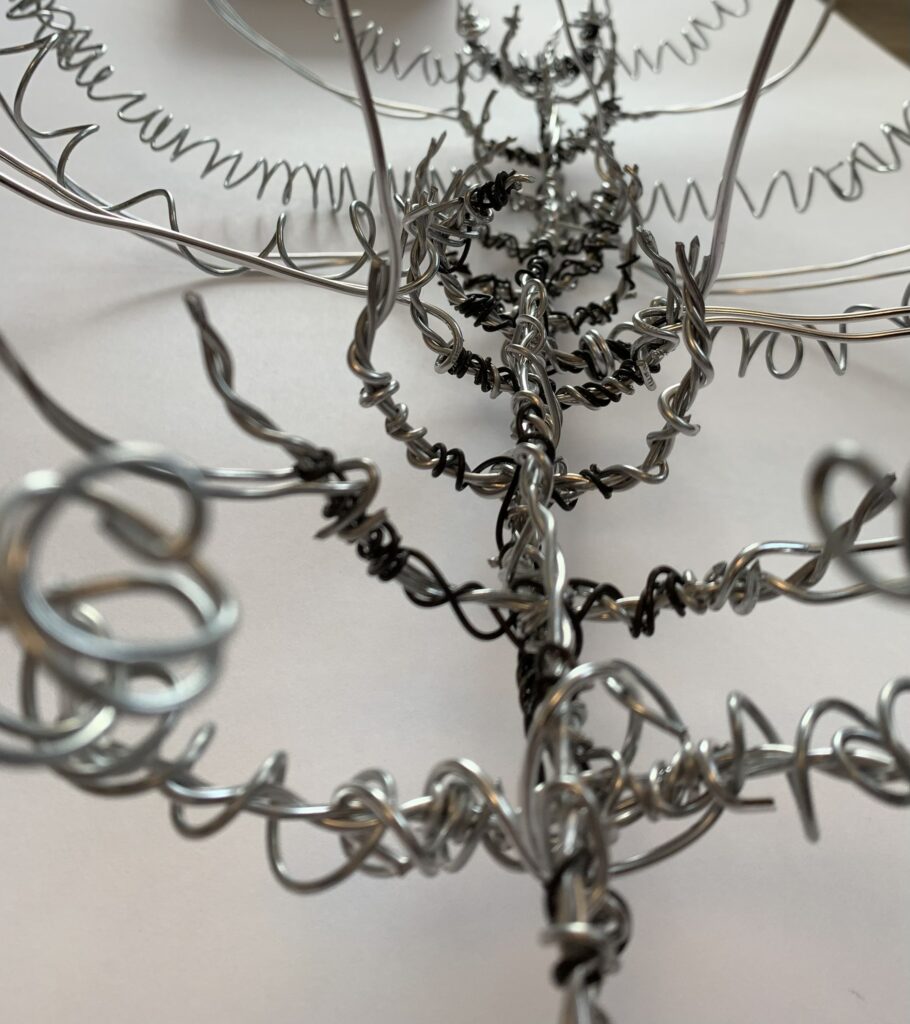Unit 1 Project: Articulating Space/ Drawing Space
Part 1: Found Object
Artist Research
Yong-Won Song
When looking over Songs’ pieces, what caught my attention was how he conveyed and captured the movement within the sculpture, it shows a deep understanding of the original natural reference. The contrast in use of materials is also something that stands out; wire – which is cold, hard and sharp to the touch and thread which is soft, warm pleasant to touch. In some of his works, the addition of the rib cage and partial spine inside the hollow structure along with the objects’ stance gives the overall piece nice balance. The shadows that the pieces cast also add some fun complexity to the sculpture.
Deer Skull Drawings/Process Work
Wire Process Work
In the beginning I created the antlers and top of the skull, wrapping wire around itself to create a thick base. The eye sockets were made separately and attached once all base pieces were finished. (unfortunately did not take photos of the pieces separated.)
Once my base was finished, I moved onto building structure; giving the antlers more volume and form.
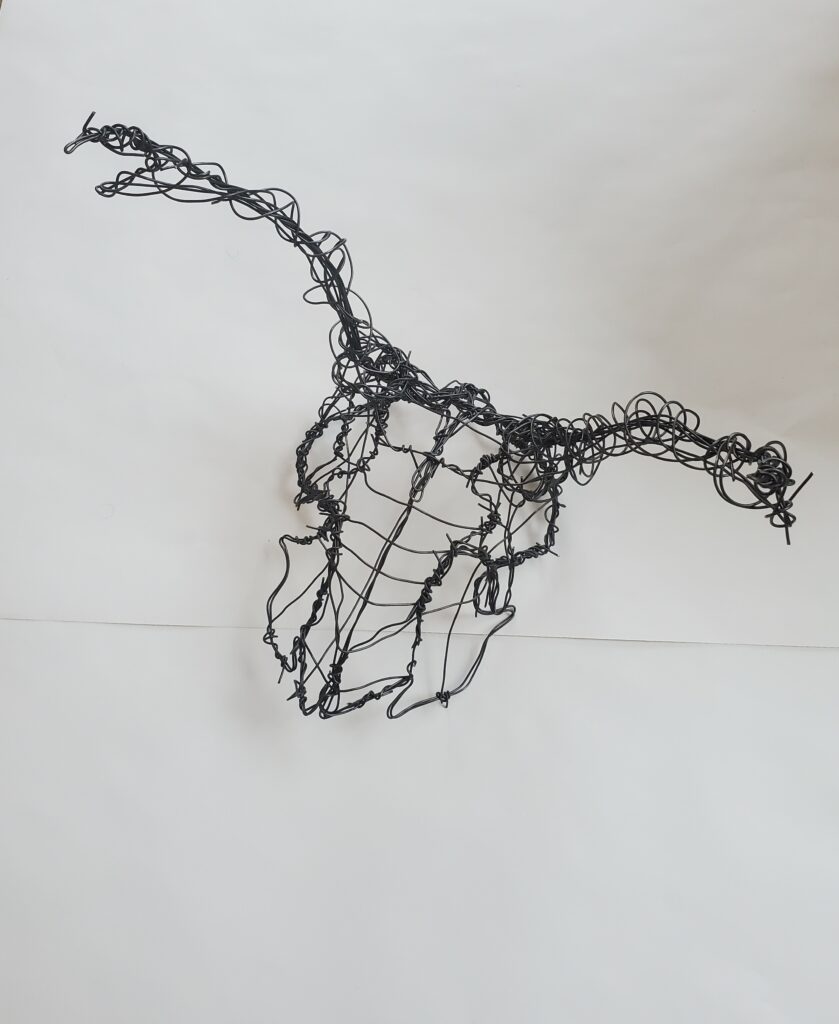
Unit 1 Part 2: Drawing in Space
Artist Research: Leslie Pearson
Leslies Pearsons’ work caught my attention with her use of materials. Her use of 3D formations creates an interesting environment with many different shapes and forms. As seen in the work “Barnacles” the use of texture in material is also quite prevalent. The gauze is also quite thin which enables light to pass through relatively easily adding complexity in the overall presentation.
Sources
http://www.worldofthreadsfestival.com/artist_interviews/091_leslie_pearson_13.html
https://www.lesliekpearson.com/p227588911/h951eb081#h951ed4ae
Ribcage Drawings/References
Spinal Cord + Sternum Process Wire Work.
Sternum built with thick aluminum wire. Once it’s complete create bridges to strengthen and add heft to the structure. Spinal Cord built with aluminum; two pieces twisted together, bend them to proper position when done. I created eleven separate vertebrae by twisting two pieces of aluminum together, connecting and securing them them to the spine with more aluminum.
Spinal Cord/Sternum and Ribcage Documentation Photos
Reflection
I had a lot of fun creating this sculpture, I think originally I had bigger ideas for this project. However, I quickly learnt that I did not have enough wire and that aluminum wire is incredibly expensive. There is a combination of steel and aluminum wire, I had to incorporate steel to further complete the project, collected and bought in various locations. I found that, unfortunately, I had to skip out on a few ribs because I was running out of wire. I enforced the spine with corrugated black wire that had been twisted because the structure was beginning to bend over due to weight. My favourite part of this sculpture would be the spinal cord, half way through the project I was tempted to switch to the spinal cord only, but I decided to stick with my original choice. Since I used two different types of wire, I was able to compare the two – The aluminum wire was incredibly easy to use and malleable (Good for using as an outline, curvy areas) and if I was unsure of a bend I could bend it back to shape. The steel wire was incredibly hard to bend but was good for wrapping things into place. So overall, I would prefer the aluminum wire due to its bendiness. I also wish there were different colours of aluminum wire, I believe it would’ve added some fun contrast in the scultpure.
Documentation/Questions
What qualities and thicknesses of line would be best to use?
I don’t think there’s a specific quality or thickness that would be best to use since all variations have their own benefits. However, if I were to favor a certain quality or thickness, I would chose a thicker gauge – something leaning towards 8-10 gauge – as I prefer the sturdiness, heft and weight, along with its fulness.
What will be the sequence for the construction?
First, I constructed the sternum and spinal cord, as I wanted to create a strong base for the ribcage. This was created out of aluminum and steel wire. Once the base is complete I will add the individual rib bones. These bones will be made by twisting wire around something dowel shape and then bend it to the desired position. The photos below show how I twisted the wire together, making it thicker and sturdier.
How can thick and thin wire be used to create contrast and emphasis?
Thick wire can emphasize “largeness” or “fatness” and thin wire can represent or emphasize “scrawniness”. A thicker wire can also represent a “plumpness” or “roundness” while, like mentioned before, thin wire represents a sort of scrawniness. A thinner wire can also create a fun contrast between the thick outline depending on how it has been used.
Structurally, which wire would be best for different parts of the construction?
Aluminum wire would be best used for something that has a lot of curves and edges. It would be best for something that needs to be easily malleable, whether it be a thick or thin gauge. Could be used for the “outline” of a 2D sculpture portion and can be a useful filler (since so malleable). Steel would be best used for securing something in place, creating an 2D outline, and creating a sturdy structural base. It also benefits something that wants to be heavy and wants weight.
